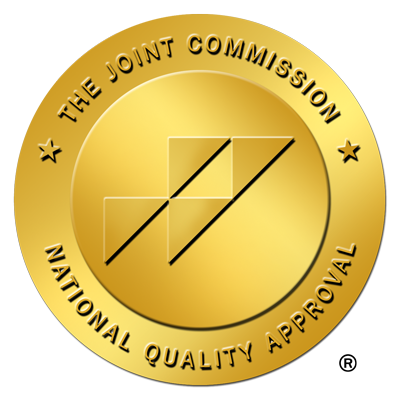One of the most important advances in our understanding of mental health and mental health disorders in the past three decades is our awareness of the impact of trauma and adverse childhood experiences on mental health. Specifically, we now understand the significant correlations between instances of early trauma – known as adverse childhood experiences (ACEs) – and the development of mental health disorders later in life, including adolescence, young adulthood, and adulthood.
While many mental health professionals and laypeople observed and understood connections between early challenges and adult mental health for decades, an evidentiary basis explaining these phenomena didn’t exist until 1998. And even then, research focused on the relationship between ACEs and long-term physical health, rather than mental health.
However, over the past three decades, researchers have connected the dots, and in 2024 – with the publication of new research on twins – the data are robust, and the facts are impossible to ignore. Let’s take a look at the study that first described the impact of ACEs, the studies that confirmed the validity of the impact of ACEs on health, and close with a look at the latest research on ACEs, published in March, 2024.
The Original Study: The CDC and Kaiser Permanente Describe ACEs
The Centers for Disease Control (CDC) partnered with Kaiser Permanente in 1998 to conduct research on the impact of early emotional or psychological trauma on adult health. Now commonly called the ACE Study, this publication was the unofficial beginning what we now call trauma-informed care, which has become an essential approach to mental health treatment in the 21st century.
The ACE Study examined early negative experiences and determined which types had long-lasting, negative effects on physical, mental, social, and emotional health. They identified the following types of experiences as traumatic, and labeled them adverse childhood experiences:
- Abuse: emotional, physical, or sexual
- Neglect: emotional or physical
- Violence: domestic violence or local, neighborhood violence
- Mental health: living with a parent or caregiver with a mental health disorder
- Substance use: living with an individual who has an alcohol or substance use disorder (AUD/SUD)
- Incarceration: having an incarcerated family member, or a family member sentenced to incarceration
Over the next decade, the same researchers released a series of follow-up studies that examined the lifelong consequences of early traumatic experiences that meet ACE criteria. Results revealed that when a person experiences four ACEs or more during childhood, they’re at increased risk of the following:
- Developmental issues in the brain and body
- Impaired emotional, social, and cognitive function
- Poor impulse control
- Chronic disability related to illness and disease.
This work had a significant impact on healthcare in general, but it took two more studies before we understood the full meaning and impact of ACEs on physical, emotional, and mental health. The first study took place in Philadelphia in 2014, and the second was published by the CDC in 2019.
Expanding Understanding of ACEs: The Philadelphia and the CDC Studies
The CDC report we discuss below and the initial CDC/Kaier study paved the way for trauma-informed care, but the work of a physician in underserved areas of Philadelphia defined the relationship between several additional categories of trauma and long-term physical and mental health.
Dr. Roy Wade, a pediatrician at the Children’s Hospital of Philadelphia published a paper in 2014 that added to the list of traumatic experiences in childhood that increased risk of various physical, emotional, and psychological disorders. These experiences also qualified as adverse, and mental health professionals include these in the overall list of ACEs:
- Lived experiences of racism and/or bullying
- Growing up in/spending time living foster homes
- Growing up/living in a dangerous neighborhood
- Seeing/witnessing violence, domestic or other
- Living with/through extreme economic hardship
Five years later, the CDC published a report that settled the matter: ACEs are real and have a quantifiable impact on long-term physical, emotional, and psychological health. Scientists at the CDC showed a history of ACEs correlated with the leading causes of death in the U.S., including:
- Suicide
- Overdose (drugs or alcohol
- Cancer
- Coronary disease
- Diabetes
In addition, CDC scientists showed that preventing traumatic experiences during childhood, specifically those categorized as ACEs, can have the following impact:
- Decrease rates of coronary disease by over 12%
- Reduce rates of depression by over 44%
- Decrease rates of obesity/unhealthy weight close to 2%
What these statistics mean is that if we enhance our efforts to protect our youth from ACEs, and increase the number of positive childhood experiences relative to adverse childhood experience, we can improve our overall health and wellbeing,
The New Study: ACEs and Twins
As we mention above, the ACE Study was a critical step toward developing an approach to mental health treatment called trauma-informed care. This approach is now a cornerstone in treating people with trauma-related disorders, which can include:
- Post-traumatic stress disorder (PTSD)
- Attachment disorders
- Acute stress disorder
- Depression
- Anxiety
- Alcohol/substance use disorder
- Personality disorders
- Dissociative disorders
While a continuously growing body of evidence supports the idea that ACEs can lead to clinically diagnosed mental health disorders during adulthood, this new study takes a deep dive into addressing the influence of genetics on mental health disorders related ACEs.
To conduct the study, the research team that published “Adverse Childhood Experiences and Adult Mental Health Outcomes” used an enormous sample of 25,252 adults twins from the Swedish Twin Cohort Study. The idea behind the study was to use twins to tease apart two influences: nature and nurture.
Nature, in this context, refers to the state of being a twin, and the fact that monozygotic twins (identical) share the same genome, and dizygotic twins (fraternal) share almost the same genome. Twins are never exact clones, genetically speaking, because after fertilization, the embryos develop independently – although they are in the same womb. Nurture, in this context, refers to the subjective experience each twin has as they grow and mature. Two twins in the same family may have vastly different subjective experiences.
The question the researchers sought to answer was whether – and to what extent – the presence of ACEs create a different risk profile for mental health disorders for individuals with a similar – and close to identical – genetic makeup and family upbringing.
Let’s take a look at what they found.
Twins, ACEs, and Mental Health Disorders
The research team assessed the 25,000+ study participants for the presence of the following ACEs:
- Family violence
- Emotional abuse/neglect
- Physical neglect
- Physical abuse
- Sexual abuse
- Rape
- Hate crime victimization
The research team then assessed the relationship of these ACEs with the following mental health disorders:
- Depression
- Anxiety
- Alcohol or drug misuse
- Stress-related disorders
Here are the results.
Adverse Childhood Experiences and Mental Health Disorders Among Twins
Number of ACEs total:
- 0: 15,051 (60%)
- 1: 5,531 (21%)
- 2: 2,174 (8.6%)
- 3+: 2,046 (8.1%)
Presence of Disorders, By Number of ACEs:
- Any disorder:
- 0: 6.4%
- 1: 10.2%
- 2: 14.8%
- 3+: 24.6%
- Alcohol or substance use disorder (AUD/SUD):
- 0: 1.5%
- 1: 2.2%
- 2: 4.0%
- 3+: 7.5%
- Depressive disorder:
- 0: 2.9%
- 1: 5.6%
- 2: 8.5%
- 3+: 13.9%
- Anxiety disorder:
- 0: 2.9%
- 1: 4.8%
- 2: 6.9%
- 3+: 13.5%
- Stress-related disorder:
- 0: 1.8%
- 1: 3.1%
- 2: 4.9%
- 3+: 9.5%
We can see the trend clearly from this basic data: the percentage of twins with mental health disorders increases alongside the number of adverse childhood experiences reported. However, a slight decrease in the percentage of mental health disorders for fraternal twins compared to identical twins indicates other environmental factors – in addition to ACEs – may contribute to the development of mental health disorders that reach a clinical threshold. This study was not designed to address these additional environmental factors, but further studies will.
In the meantime, researchers calculated the increase in risk associated with each additional ACE. Here’s what they found.
Cumulative Effect of ACEs on Risk of Mental Health Disorders
Number of ACEs/Odds Ratio (OR):
- 0: 61% of participants had no ACEs – researchers use this as “1,” the OR reference value
- 1: 10% of participants with one (1) ACE developed a mental health disorder / OR of 1.65
- 2: 14.7% of participants with two (2) ACES developed a mental health disorder / OR of 2.47
- 3+: 24.5% of participants with three (3) + ACES developed a mental health disorder / OR of 4.57
Odds ratios (ORs) are easy to understand with this quick explanation. In the first bullet point, the odds ratio of 1.65 means a twin with (1) ACE has a 65 percent greater chance of developing a mental health disorder than their twin with no ACE at all. Therefore, two ACEs increase risk of developing a mental health disorder by 147 percent, and three ACEs increase risk of developing a mental health disorder by 357 percent. According to the study authors, this corresponds with a 53 percent increase in risk for each additional ACE a person experiences.
What Did We Learn About Adverse Childhood Experiences?
Here’s how the study authors describe their results:
“We found ACEs were associated with adult mental health outcomes after adjustment for familial confounding. After adjusting for shared genetic and environmental factors in stringent twin analyses, the association between ACEs and clinically confirmed adult psychiatric disorders remained evident, with particularly large increases in odds after multiple ACEs or sexual abuse.”
In other words, the greater the number of ACEs, the greater the risk of adult mental health disorders, with the greatest risk shown among participants with three or more ACEs, and the greatest risk appearing among participants who reported a history of sexual abuse.
This study confirms the association of ACEs with mental health disorders. This is important information for mental health providers, families, and policymakers.
But what do we do with this information?
We can look to the CDC guidance on how to prevent ACEs, presented in the 2019 publication “Adverse Childhood Experiences Prevention: Resource for Action.” Here’s what they recommend.
Preventing Adverse Childhood Experiences in Our Communities
- Increase economic support for families:
- Family friendly work policies
- Practice and promote norms that protect children from violence:
- Public education
- Legislation
- Bystander education
- Promote a safe and healthy early childhood:
- Home visits from social workers
- High quality, affordable childcare
- Enhance pre-k/preschool education
- Teach/learn relationship skills:
- Social-emotional learning
- Safe dating/healthy relationship coaching
- Parenting skills classes
- Connect youth to helpful adults:
- Mentoring programs
- After school enrichment
- Interventions to prevent acute harm/reduce long-term harm:
- Increase vigilance at Primary Care level
- Expand victim services
- Increase treatment access for adults with history of ACEs
- Increase treatment for teens and youth with ACEs
- Expand family centered AUD/SUD treatment
When families, treatment providers, policymakers, and individuals cooperate and collaborate to reduce the prevalence of ACEs by following the recommendations above, we can improve the current mental health of our children, adolescents, and young adults. And when we understand the impact of ACEs on adult mental health, we can help adults with mental health disorders identify and process their early trauma, with the knowledge that evidence-based care – delivered sooner than later – is effective, and can help an individual with mental health challenges find balance and live a full and productive life.




